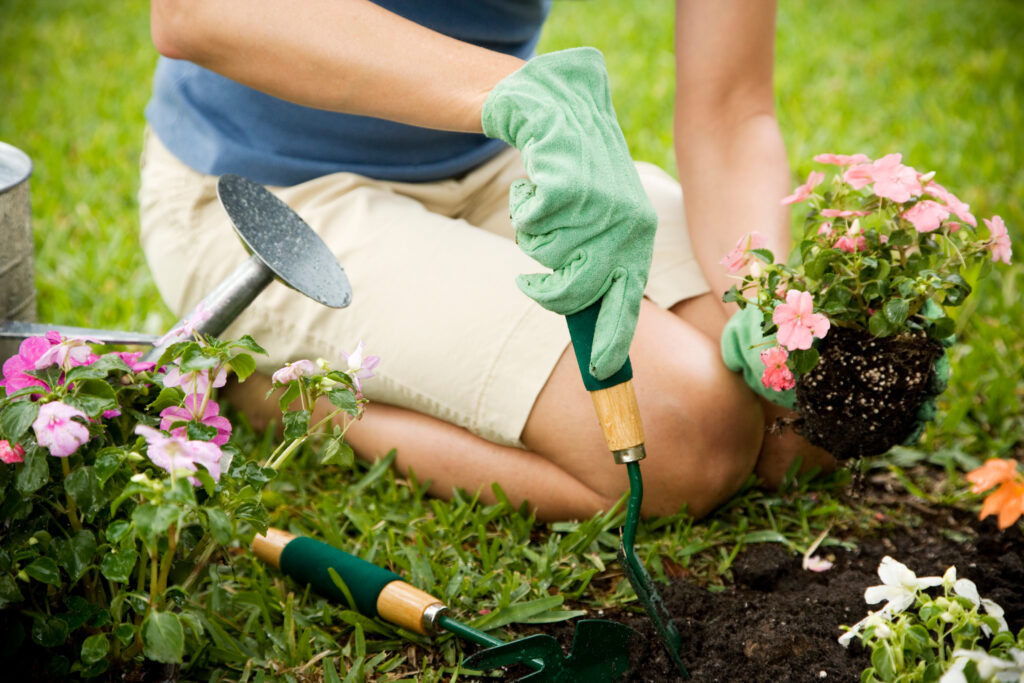Like other physical activities, gardening can be tough on your joints. But it doesn’t have to be if you utilize these joint-friendly tips.
Americans love their gardens. Around 185 million people — or 55 percent of U.S. households — tend to a garden. It’s easy to see why people devote so much time to gardening, it’s a great way to grow fresh flowers, fruits, and vegetables in your own backyard under the sun. But as with any outdoor activity, gardening can strain your joints, especially your back and knees, leading to pain and stiffness. Luckily, you can avoid joint problems and still enjoy your garden with our easy-to-follow tips.
Six joint-friendly gardening tips
Gardening, while certainly enjoyable, takes a lot of work! To make your garden bountiful and beautiful, you have to bend, kneel, and twist. Over time, these actions can overtax your body, especially the spine and knees. To take the pressure off your joints, keep these tips in mind:
Warm up. Just as with any strenuous exercise, a warm-up routine is essential. Before your gardening session, do gentle stretches or take a brisk walk to prepare your muscles and joints. One warm-up exercise to try is lying down on your back and pulling your knees to your chest. At the same time, bring your head forward. This will restore flexibility to your low back muscles and prepare you for an afternoon of tending to your plants.
Kneel correctly. Weeding and planting requires you to bend down a lot, and that stresses the knees. Take the strain off your knees by kneeling on one knee and keeping your back in a neutral position. Or, if you bend down on both knees, support yourself by placing one hand on the ground and balancing your weight forward while keeping your spine neutral.
Lift with your knees. There will come a time in your garden where heavy lifting is required, but that won’t be a problem if you lift the right way. Rather than bending at the waist and rounding your shoulders, bend at the knees and hips while keeping your back straight. This position takes the pressure off your spine. Grab the object with both hands and hold it close to your body. Then slowly raise your legs as you stand up.
Invest in gardening equipment to reduce strain. You don’t have to do all the heavy lifting and bending on your own. Invest in gardening equipment, like a wheelbarrow, to ease the burden on your body. Keep in mind that tools with longer handles lessen the need to bend down while gardening, and can therefore reduce the impact the activity has on your body. Knee pads provide extra cushioning for your knees. Or better yet, invest in a cushioned kneeler with handles to make getting up and down easier.
Take a break. As with any other exercise, gardening for hours on end can cause pain and stiffness. Take frequent breaks, especially if you’ve been in one position for a long time, to give your body a chance to rest.
Vary your gardening tasks. Carve out time to weed or prune one day, while scheduling planting for another day. That way, you avoid straining one part of your body too much at one time.
Remember, since you’re outside in the sun, drink water to prevent dehydration and muscle cramps.
Gardening should be a fun, invigorating activity. But if you experience pain while gardening, see a physical therapist. They can modify your form and give you pointers on how to garden without stressing your joints, so both you and your garden can thrive.
Let the pros help you garden
Don’t let an aching back or knees stop you from gardening. At New York Bone & Joint Specialists, we employ a team of orthopedists and physical therapists to help you overcome joint pain. Our goal is to ensure you enjoy gardening or other physical activity without any discomfort. Contact us today for a consultation.




